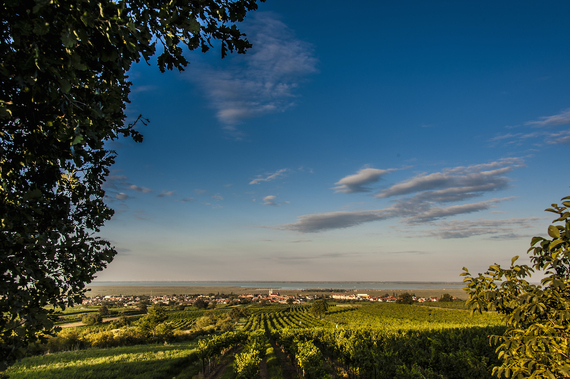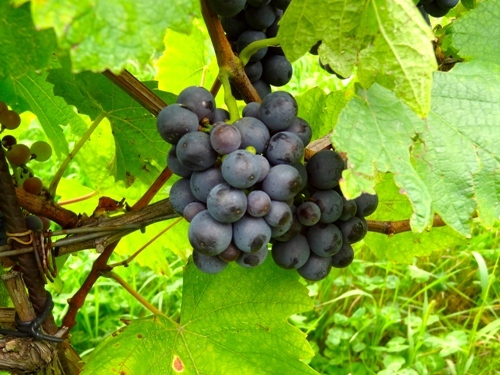Of all the regions of Austria that grow wine grapes--Wachau, Kremstal, Kamptal, Donauland, and others--the most exciting innovations are coming out of Burgenland for wines at the Qualitätswein level as set by the Austrian Wine Marketing Board, created in 1986. On a recent visit I was amazed at the breadth of varietals from the vineyards of this southeastern region, In fact, the Weinkulturhaus in Gols carries more than 400 labels, all from Burgenland, which now has its own Wein Burgenland marketing association.
Wine has been made in Austria for 4,000 years, and at one time it was the third largest producer in the world; now it is sixteenth. Vineyards devastated by phylloxera in the 19th century were replanted with poor quality grape vines, and by the 1980s much of its production was sold in bulk, which led to a few unscrupulous wineries trying to bolster flavor by adding minute amounts of anti-freeze-like diethylene glycol, which caused an international scandal and long-lasting reaction against all Austrian wines. 
Since then, younger wineries, especially in Burgenland, have been working hard to make quality wines on a global level, and the new wine laws and adherence to EU standards have helped enormously. Winemakers also have eschewed the antiquated German Fraktur font from their labels, done away with the German term Spätburgunder for Pinot Noir, and moved beyond the favored Müller-Thurgau and Sylvaner white varietals once promoted for export.
While visiting Bergenland last fall, I drank its wines while in the region, and found them well represented in the best restaurants in Vienna. "Red wine culture only really began in Burgenland around 1986," the managing director of Wein Burgenland, Christian Zechmeister, told me over lunch in the city of Eisenstadt. "About 30 % of the wines are red, made from Blaufrankisch, Zweigelt, Blauberger, Pinot Noir, St. Laurent, and others, and they are all being pioneered by young winemakers."
One of the most innovative wineries in the area is Szgeti, whose owner Peter Szgeti, makes a wine variety of Bergenland wines and is especially known for his sparkling wines made from Grüner Veltliner and Welschriesling, made in a dry, brut style. Szgeti also makes a prestige brut blend of 60% chardonnay and 40% blanc de blancs by the French champenoise method, which I found did indeed compare with very good Champagne. Yet his sparklers never rise to the extravagant prices of French competitors: Brut Grand Reserve is only 38 euros, his Grüners about 20.
I was, however, most impressed by the Austrian red wines I tasted, for I'd never had much interest in them before and very little at all with those from Burgenland. I had a splendid wine named Juris (George) from Gols, made from the often finicky St. Laurent grape, related to Pinot Noir, but with more body and concentration. It's a varietal Burgenland vintners are banking on to find an international audience.
Blaufrankisch (below) is already in the vanguard, as shown by a delicious 2013 from Weingut Ernst Triebaumer, which is also experimenting with blends of the varietal with Cabernet Sauvignon and Merlot.
I was even impressed by several Grüner Veltliners I tried--a varietal I've always found bland at best. The 2013 Esterházy Estoras example had much more flavor, with nutty and peppery notes, and pleasant 12.5% alcohol.
These wines are made to be drunk young, though the reds can certainly mature with a few years in bottle. And with prices being so reasonable, you can buy a few bottles and taste the same vintage for years to come to see just how bright the future of Burgenland's wines might be.

